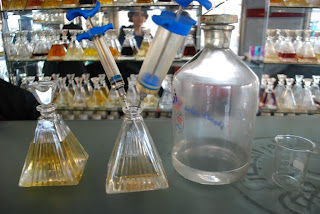Tonight I was speaking to an engineer from Gaza, who was asking me about my experience here so far. We talked about the view from the outside world, and what it has like to be here; what is congruent with the media, and on the other hand the surprises Gaza beholds. I have to admit, when I first came to Gaza I thought absolutely everything was going to be destroyed to this day- even one year after the Israeli military incursion in Gaza one year ago that killed over a thousand Palestinians.
Numbers of Palestinian casualties are controversial:
- Palestinian Center for Human Rights stated there were 1,417 casualties
- Israeli Defense forces said there were 1,166 casualties
Even though many of the buildings are still in their exact state after being bombed, much of the rubble has been moved thanks to the help of the United Nations, and other International NGO's in Gaza. However no reconstruction has taken place because of blockade and the restrictions on cement.
One of the many things I did not expect to find are a variety of products or restaurants. Most articles published around the world describing Gaza show the effects of the war and the humanitarian crisis that is still in existence. It is well deserved media, especially considering that even a year later-- not much has improved in terms of rebuilding the lives of Gazans due to the blockade. But my goal is to show a few different views in Gaza- from the sad truths that still exist, to a few other images that you may not suspect when you think of this territory.

Tonight for example I was very surprised to see Mazaj Coffee House. It is a beautiful and chic restaurant in Gaza complete with clean lines, elegant design, beautifully decorated with luxurious chairs and sprinkled with modern art. There are a few of these types of restaurants around Gaza- but it is important to note that it is not easy on the wallet, and only a few tend to go to these types of places. But it is important for me to show a few perspectives of life in Gaza City.
The menu seems like it's straight out of New York City with items such as "Caesar Salad" or "Mexican Fajitas" or luxurious sounding coffee drinks. One friend, "S", pointed out that the menu is a bit ridiculous considering that things like "Fajitas" are written directly transcribed into Arabic, but no explanation is in Arabic- it is however in English. So, a little bit ironic- or maybe pointing towards an audience (rather elitist maybe?). S is fluent in both languages but has mentioned it to the owners before that maybe--erm-- it should be in Arabic too.
Here is a capuccino, which I have to admit- pricey, but bold flavored and beautifully presented.
And voila an image of a fresh Greek Salad.
Last but not least "Green Fire"- a pineapple juice drink that my friend ordered.
The restaurants in Gaza mostly serve "western food" except for one, which is a shame, because to be honest all I really want is delicious Middle Eastern food. Someone pointed out to me that most people have big families who prepare delicious Palestinian meals at home-- so why would anyone go out for a traditional meal? Unfortunately my family is quite far away-- so no daily home cooked regional meals for me- but I have been fortunate enough to enter the warm and wonderful homes of Gazans.
Mazaj is also complete with a spice store, pastry shop and coffee boutique.
A note--almost all products in Gaza come from the tunnels originating in Egypt otherwise Gazans would not have any of these products available. The tunnels are considered an "illegal economy" by some foreign standards and have been frequently targeted by Israeli air-strikes. Egypt is now planning a wall in order to block the tunnel movement. More on that later...




















 (Usually the cheese is on the bottom, but she will flip it over). The final product looked like this:
(Usually the cheese is on the bottom, but she will flip it over). The final product looked like this: My co-worker just got engaged (MABROUK!) and he brought in a professional and very, very, large Kunafa. I asked my co-workers to put their hands next to it so you could see how big it was.
My co-worker just got engaged (MABROUK!) and he brought in a professional and very, very, large Kunafa. I asked my co-workers to put their hands next to it so you could see how big it was.

 It turns out, that people who have leftover bread (fresh pita bread gets stale pretty quickly) leave it out on the streets for stray animals to eat.
It turns out, that people who have leftover bread (fresh pita bread gets stale pretty quickly) leave it out on the streets for stray animals to eat.


 A visit to a family in the oPt is not a quick hour and a half, it usually entails hours of lounging, chatting, drinking tea, playing with the kids, and feasting on one of the many beautiful meals native to the Middle East. K's wonderful meal below was a luxurious Maftoule dish (like cous cous)- with fresh beef, lots of veggies, and plenty of olive oil (the true secret!)
A visit to a family in the oPt is not a quick hour and a half, it usually entails hours of lounging, chatting, drinking tea, playing with the kids, and feasting on one of the many beautiful meals native to the Middle East. K's wonderful meal below was a luxurious Maftoule dish (like cous cous)- with fresh beef, lots of veggies, and plenty of olive oil (the true secret!)




 After the sheep is skinned, it is hung, gutted and prepared for chopping.
After the sheep is skinned, it is hung, gutted and prepared for chopping.








